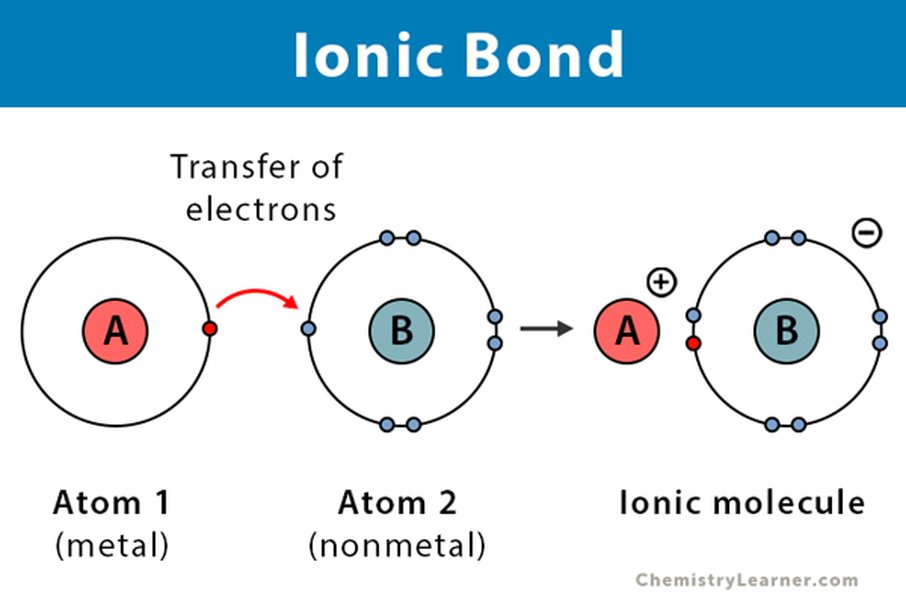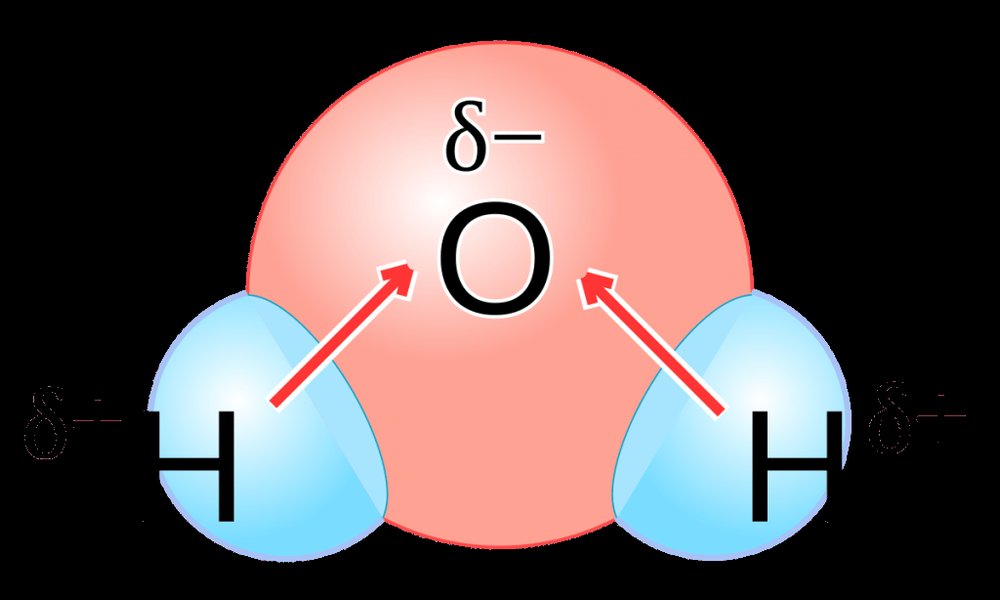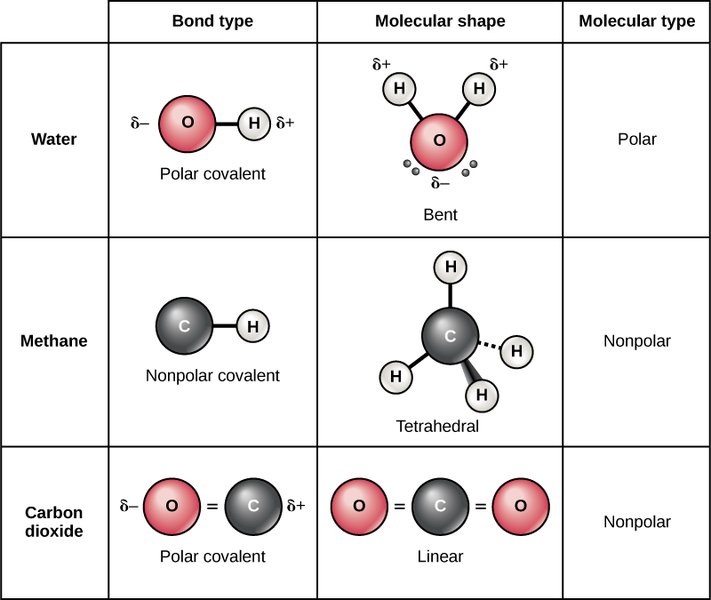
Decoding the Dance of Atoms: Ionic vs. Polar vs. Nonpolar Bonds Explained
Unravel the fundamental forces shaping molecules, from complete electron swaps to subtle sharing dynamics.
Atoms rarely exist in isolation; they interact and link together through forces known as chemical bonds, forming the molecules and compounds that make up everything around us. Understanding the nature of these bonds is crucial in chemistry, as it dictates the properties and behavior of substances. The primary ways atoms connect involve the interactions of their outermost electrons (valence electrons). These interactions fall into distinct categories, primarily ionic bonds, polar covalent bonds, and nonpolar covalent bonds, each defined by how electrons are distributed between the bonded atoms.
Essential Insights into Chemical Bonding
- Electron Distribution is Key: The fundamental difference lies in how electrons are handled – complete transfer in ionic bonds, unequal sharing in polar covalent bonds, and equal sharing in nonpolar covalent bonds.
- Electronegativity Drives the Type: An atom's ability to attract electrons (electronegativity) determines the bond type. Large differences lead to ionic bonds, moderate differences to polar covalent, and small or no differences to nonpolar covalent bonds.
- Bond Type Dictates Properties: Whether a substance is solid or gas, dissolves in water, or conducts electricity often depends directly on the type of chemical bonds holding its atoms together.
Delving into Ionic Bonds: The Art of Electron Transfer
When Atoms Give and Take
Ionic bonds represent a complete transfer of one or more valence electrons from one atom, typically a metal, to another atom, usually a nonmetal. Metals tend to have low electronegativity and readily lose electrons to achieve a stable electron configuration, becoming positively charged ions called cations. Nonmetals, with their higher electronegativity, readily gain electrons to achieve stability, becoming negatively charged ions called anions.
Formation and Characteristics
The driving force behind ionic bonding is the strong electrostatic attraction between these oppositely charged ions. This attraction pulls the ions together into a tightly packed, repeating three-dimensional structure known as a crystal lattice.
- Electronegativity Difference: Ionic bonds typically form when the difference in electronegativity between the two atoms is large, generally considered to be greater than 1.7 or 1.8 on the Pauling scale.
- Charge Distribution: There isn't sharing; instead, there are distinct, fully charged positive and negative ions.
- Atoms Involved: Most commonly formed between metals (Groups 1 and 2) and nonmetals (Groups 16 and 17).

Formation of an ionic bond between Sodium and Chlorine, resulting in Sodium Chloride (NaCl).
Properties of Ionic Compounds
The strong forces holding the ions together result in characteristic properties:
- Physical State: Typically crystalline solids at room temperature.
- Melting and Boiling Points: Generally very high due to the strong electrostatic forces requiring significant energy to overcome.
- Conductivity: Do not conduct electricity in the solid state because the ions are fixed in the lattice. However, they become good conductors when molten (melted) or dissolved in water, as the ions are free to move and carry charge.
- Solubility: Often soluble in polar solvents like water, which can surround and stabilize the individual ions, breaking apart the lattice structure (dissociation).
- Brittleness: Ionic crystals tend to be brittle; applying force can shift layers of ions, bringing like charges close together, causing repulsion and shattering the crystal.
Example: Sodium chloride (NaCl - table salt) is a classic example. Sodium (Na) donates an electron to Chlorine (Cl), forming Na⁺ and Cl⁻ ions, which arrange into a crystal lattice.
Exploring Covalent Bonds: The Principle of Sharing
When Atoms Cooperate
Covalent bonds involve the sharing of valence electrons between atoms, typically occurring between two nonmetal atoms. Instead of a transfer, atoms share electrons to achieve a more stable electron configuration, often fulfilling the octet rule (having eight valence electrons). The shared electrons are attracted to the nuclei of both atoms involved in the bond, holding the atoms together to form distinct units called molecules.
The nature of this sharing isn't always equal, leading to two sub-types: polar covalent and nonpolar covalent bonds.
Polar Covalent Bonds: Unequal Sharing Creates Poles
In a polar covalent bond, the shared electrons are attracted more strongly to one atom than the other. This happens when the two atoms involved have different electronegativity values, but the difference is not large enough to cause an ionic transfer.
Formation and Characteristics
- Electronegativity Difference: Occurs when the electronegativity difference is moderate, typically between 0.4 and 1.7/1.8.
- Charge Distribution: The unequal sharing leads to a partial negative charge (denoted as \(\delta^{-}\)) on the more electronegative atom and a partial positive charge (\(\delta^{+}\)) on the less electronegative atom. This separation of charge creates an electric dipole moment within the bond.
- Molecular Polarity: The presence of polar bonds can make an entire molecule polar if the molecular geometry is asymmetrical, meaning the bond dipoles do not cancel each other out.

Water (H₂O) exhibits polar covalent bonds, leading to a net dipole moment for the molecule.
Properties Influenced by Polarity
- Intermolecular Forces: Polar molecules exhibit stronger intermolecular forces (like dipole-dipole interactions and hydrogen bonding) compared to nonpolar molecules of similar size.
- Melting and Boiling Points: Generally have higher melting and boiling points than nonpolar molecules due to these stronger forces.
- Solubility: Polar substances tend to dissolve well in other polar solvents ("like dissolves like"). Water is an excellent polar solvent.
Example: In a water molecule (H₂O), oxygen is significantly more electronegative than hydrogen. The O-H bonds are polar covalent, with oxygen having a partial negative charge (\(\delta^{-}\)) and hydrogen atoms having partial positive charges (\(\delta^{+}\)). The bent shape of the water molecule results in an overall molecular polarity.
Nonpolar Covalent Bonds: A Perfect Balance of Sharing
Nonpolar covalent bonds occur when electrons are shared equally between two atoms. This perfect sharing happens when the two atoms have identical or very similar electronegativity values.
Formation and Characteristics
- Electronegativity Difference: Occurs when the electronegativity difference is very small or zero (typically less than 0.4).
- Charge Distribution: The electron density is spread evenly between the two atoms, resulting in no partial charges and no bond dipole.
- Atoms Involved: Common between identical nonmetal atoms (e.g., in diatomic molecules like O₂, N₂, Cl₂) or between different atoms with very similar electronegativities (e.g., Carbon and Hydrogen in methane, CH₄).
- Molecular Polarity: Molecules composed entirely of nonpolar bonds are nonpolar. Additionally, a molecule can have polar bonds but be nonpolar overall if its geometry is symmetrical, causing the bond dipoles to cancel out (e.g., carbon dioxide, CO₂).

Diatomic molecules like O₂ feature nonpolar covalent bonds with equal electron sharing.
Properties of Nonpolar Substances
- Intermolecular Forces: Only weak London dispersion forces exist between nonpolar molecules.
- Melting and Boiling Points: Generally have low melting and boiling points due to weak intermolecular forces. Many are gases or liquids at room temperature.
- Solubility: Tend to dissolve well in nonpolar solvents (like oils and fats) but are typically insoluble in polar solvents like water.
Example: Oxygen gas (O₂) consists of two oxygen atoms sharing electrons equally. Methane (CH₄) has C-H bonds that are only very slightly polar, and due to its symmetrical tetrahedral shape, the molecule itself is nonpolar.
Visualizing the Bonding Landscape
Mindmap of Chemical Bond Types
This mindmap provides a hierarchical overview of the three main bond types discussed, highlighting their core characteristics and relationships.
(Metal + Nonmetal)"] id1b["Large Electronegativity Difference
(> 1.7)"] id1c["Formation of Ions
(Cations & Anions)"] id1d["Strong Electrostatic Attraction"] id1e["Properties: High MP/BP, Conducts when Molten/Dissolved, Solid"] id1f["Example: NaCl"] id2["Covalent Bond"] id2a["Electron Sharing
(Nonmetals)"] id2b["Polar Covalent"] id2b1["Unequal Sharing"] id2b2["Moderate Electronegativity Difference
(0.4 - 1.7)"] id2b3["Partial Charges (δ+, δ−)
Bond Dipole"] id2b4["Properties: Intermediate MP/BP, Often Polar Molecules"] id2b5["Example: H₂O"] id2c["Nonpolar Covalent"] id2c1["Equal Sharing"] id2c2["Small/Zero Electronegativity Difference
(< 0.4)"] id2c3["No Charge Separation"] id2c4["Properties: Low MP/BP, Often Nonpolar Molecules"] id2c5["Example: O₂, CH₄"]
Comparative Characteristics Radar Chart
The following chart visually compares the general tendencies of ionic, polar covalent, and nonpolar covalent bonds across several key characteristics. Note that these are generalized trends, and actual values vary greatly depending on the specific atoms involved. The scale represents relative intensity or magnitude, not absolute values.
Summarizing the Differences: A Comparative Table
Ionic vs. Polar Covalent vs. Nonpolar Covalent
The table below concisely summarizes the core distinctions between the three main types of chemical bonds based on electron behavior, electronegativity, charge distribution, and resulting properties.
| Feature | Ionic Bond | Polar Covalent Bond | Nonpolar Covalent Bond |
|---|---|---|---|
| Electron Behavior | Complete transfer | Unequal sharing | Equal sharing |
| Electronegativity Difference (ΔEN) | Large (> ~1.7) | Moderate (~0.4 to 1.7) | Small (< 0.4) or Zero |
| Charge Distribution | Full positive (cation) and negative (anion) ions | Partial positive (\(\delta^{+}\)) and partial negative (\(\delta^{-}\)) charges (dipole) | No significant charge separation (neutral) |
| Typical Atoms Involved | Metal + Nonmetal | Nonmetals with different electronegativities | Identical Nonmetals or Nonmetals with very similar electronegativities |
| Nature of Resulting Substance | Ionic Compound (Crystal Lattice) | Molecule (Often Polar) | Molecule (Often Nonpolar) |
| Typical Physical State (Room Temp) | Solid | Gas, Liquid, or Solid | Gas or Liquid |
| Melting/Boiling Points | Very High | Intermediate | Low |
| Conductivity | Conducts electricity when molten or dissolved | Generally Poor (unless it ionizes in solution) | Does not conduct electricity |
| Solubility in Water (Polar Solvent) | Generally High | Often High (if molecule is polar) | Generally Low |
| Examples | NaCl, MgO, CaCl₂ | H₂O, HCl, NH₃ | O₂, N₂, Cl₂, CH₄, CO₂ (molecule is nonpolar despite polar bonds) |
The Bonding Continuum
It's important to recognize that these bond types represent points along a continuum rather than strictly separate categories. The transition from nonpolar covalent to polar covalent to ionic is gradual and depends on the increasing difference in electronegativity between the bonding atoms. Many bonds have characteristics of both covalent and ionic nature (polar covalent bonds exhibit partial ionic character).
Understanding Chemical Bonds in Action
Video Explanation
For a dynamic explanation of these concepts, the following video provides a clear overview of ionic and covalent bonding, including the distinction between polar and nonpolar covalent bonds. It helps visualize electron behavior and the resulting molecular properties.
Crash Course Chemistry explains ionic bonds, polar covalent bonds, and nonpolar covalent bonds.
Frequently Asked Questions (FAQ)
How does electronegativity exactly determine the type of bond?
Can a molecule have polar bonds but still be nonpolar overall?
Are ionic bonds always stronger than covalent bonds?
What are some real-world examples or applications?
Recommended Further Exploration
- How does molecular geometry affect the overall polarity of a molecule?
- What is electronegativity and how is it measured on the Pauling scale?
- Compare the types and strengths of intermolecular forces associated with polar and nonpolar molecules.
- Explain the special type of dipole-dipole interaction known as hydrogen bonding and why it is important.
References
Last updated May 5, 2025